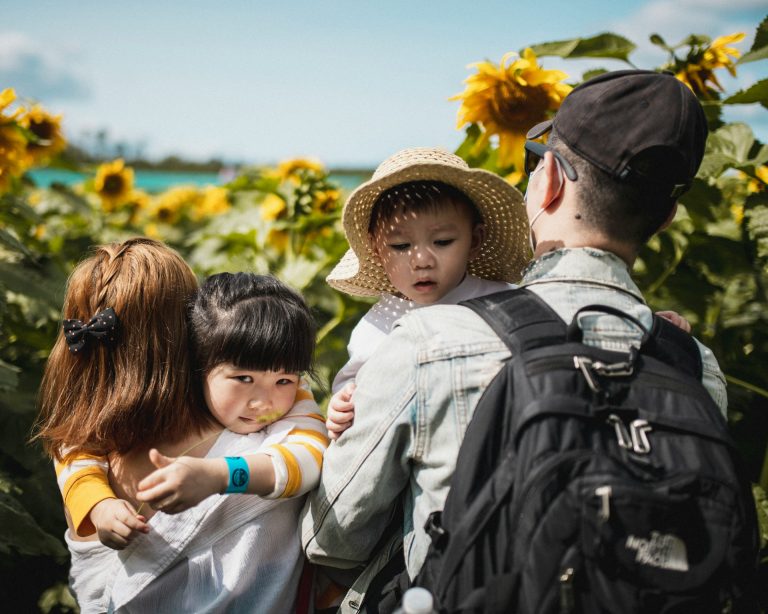33 Fun Baby Activities for 6-Month Development
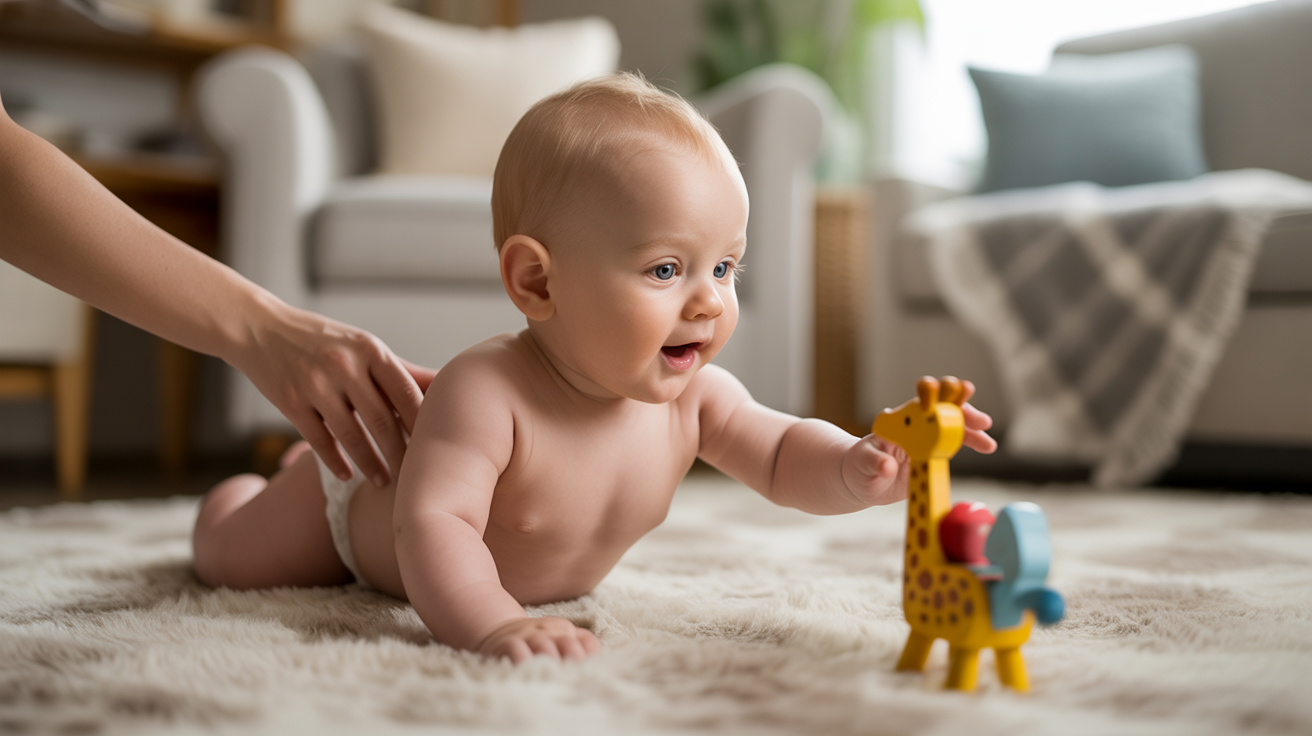
At six months old, your baby is reaching exciting developmental milestones, including rolling over, sitting with support, reaching for objects, and showing increased social awareness.
This period marks a crucial time for brain development and physical growth that will shape your child’s future learning abilities.
During this stage, your baby’s curiosity about the world around them intensifies as they begin to understand cause-and-effect relationships.
Their hand-eye coordination improves significantly, enabling them to grasp toys with greater precision and transfer objects between their hands.
Regular engagement through these activities helps establish healthy learning patterns and creates positive associations.
Understanding Your Baby’s 6-Month Development Stage
At six months, your baby’s brain is rapidly forming new connections that support motor skills, sensory processing, and early communication abilities.
This developmental period is characterized by increased physical coordination, heightened curiosity, and the emergence of social skills that form the foundation for future learning.
Your baby’s attention span is expanding, allowing for more extended periods of focused play and interaction.
They are beginning to show preferences for certain activities, toys, and people, which indicates the growth of cognitive awareness and memory development.
Understanding these changes helps parents choose appropriate activities that match their baby’s current abilities while gently challenging them to reach new milestones.
Developmental Activities for Your 6-Month-Old Baby
These activities are specifically designed to support your baby’s growth across all developmental areas, including motor skills, sensory awareness, language, and social-emotional development.
1. Tummy Time
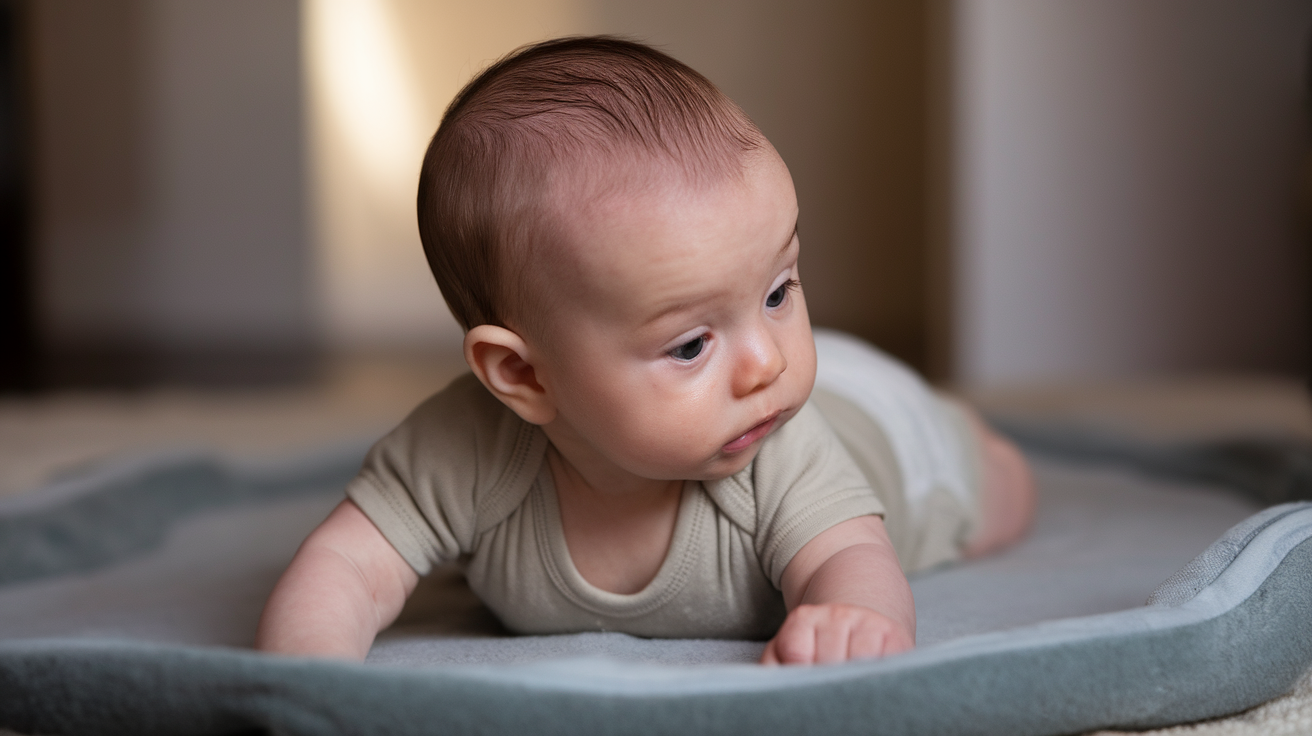
Build neck and shoulder strength with daily supervised tummy time sessions. This foundational activity helps develop the muscles needed for future motor milestones.
Start with 3-5 minutes and gradually increase duration as your baby becomes more comfortable. Try varying positions by placing your baby on your chest or using a rolled towel under their chest for support.
2. Assisted Sitting
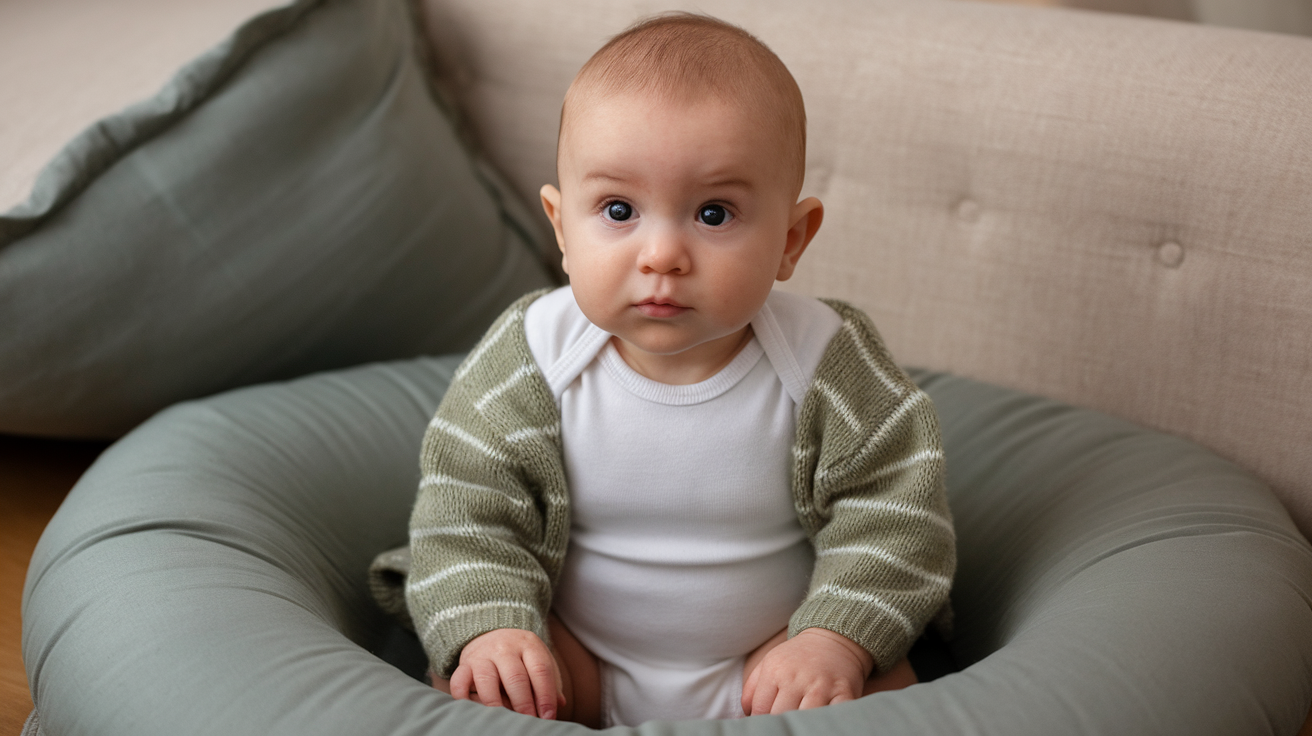
Support your baby as they learn to sit with help, building core muscles. Use pillows around them for extra safety during practice sessions. Start by sitting behind your baby and gradually reduce support as their balance improves.
Practice on different surfaces like carpet, grass, or a play mat to challenge their balance skills.
3. Reaching for Toys

Place colorful toys just out of reach to encourage stretching and coordination. This activity promotes the development of hand-eye coordination and spatial awareness.
Use toys with varying textures, sizes, and sounds to maintain interest and provide a range of sensory experiences.
4. Rolling Practice
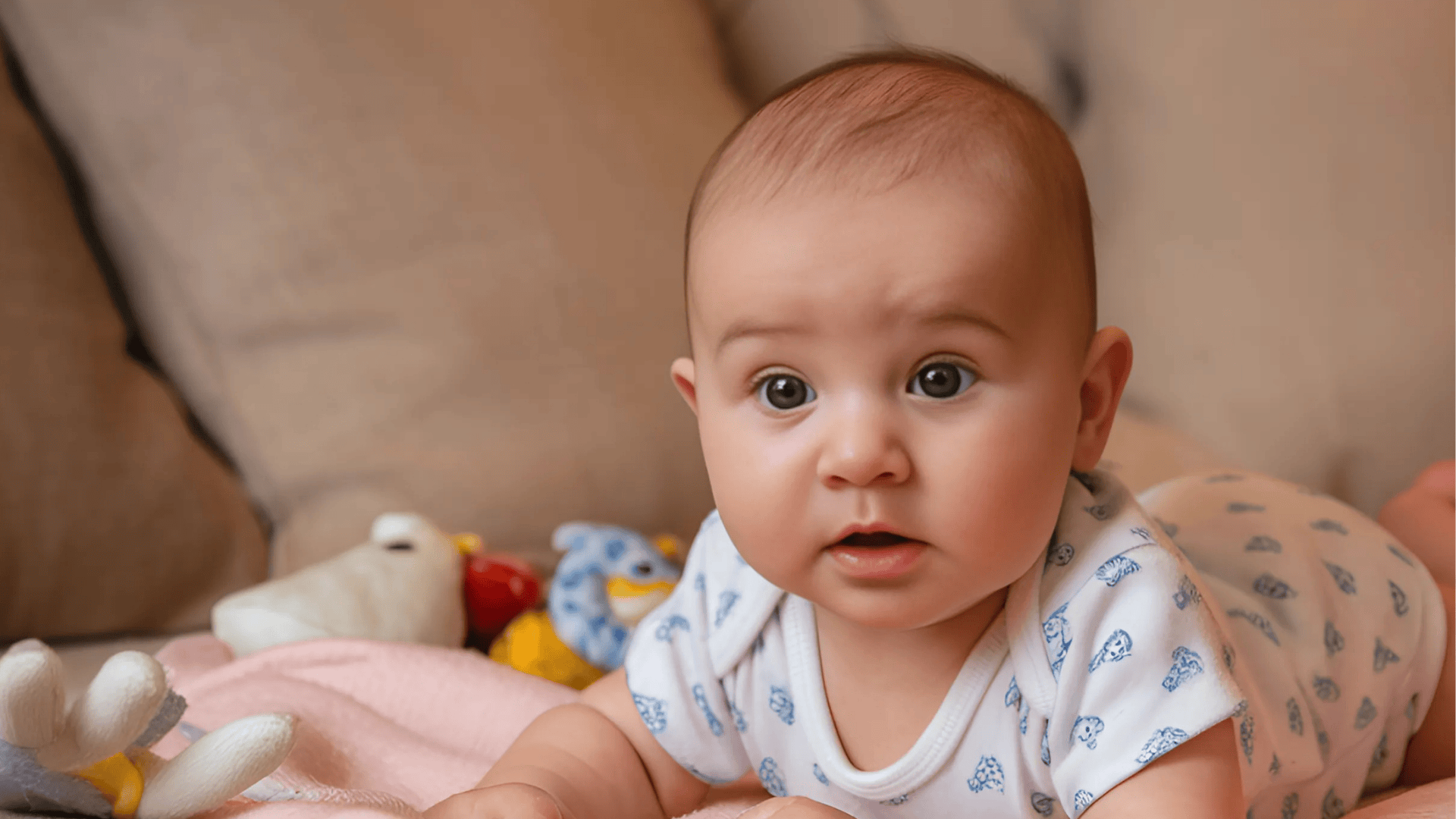
Encourage rolling from tummy to back and vice versa on a soft surface. Place toys to one side to motivate movement in that direction. Start by gently helping your baby through the rolling motion to show them how it feels.
Practice on different surfaces and gradually reduce your assistance as your baby becomes more independent with the movement.
5. Rolling Ball Play
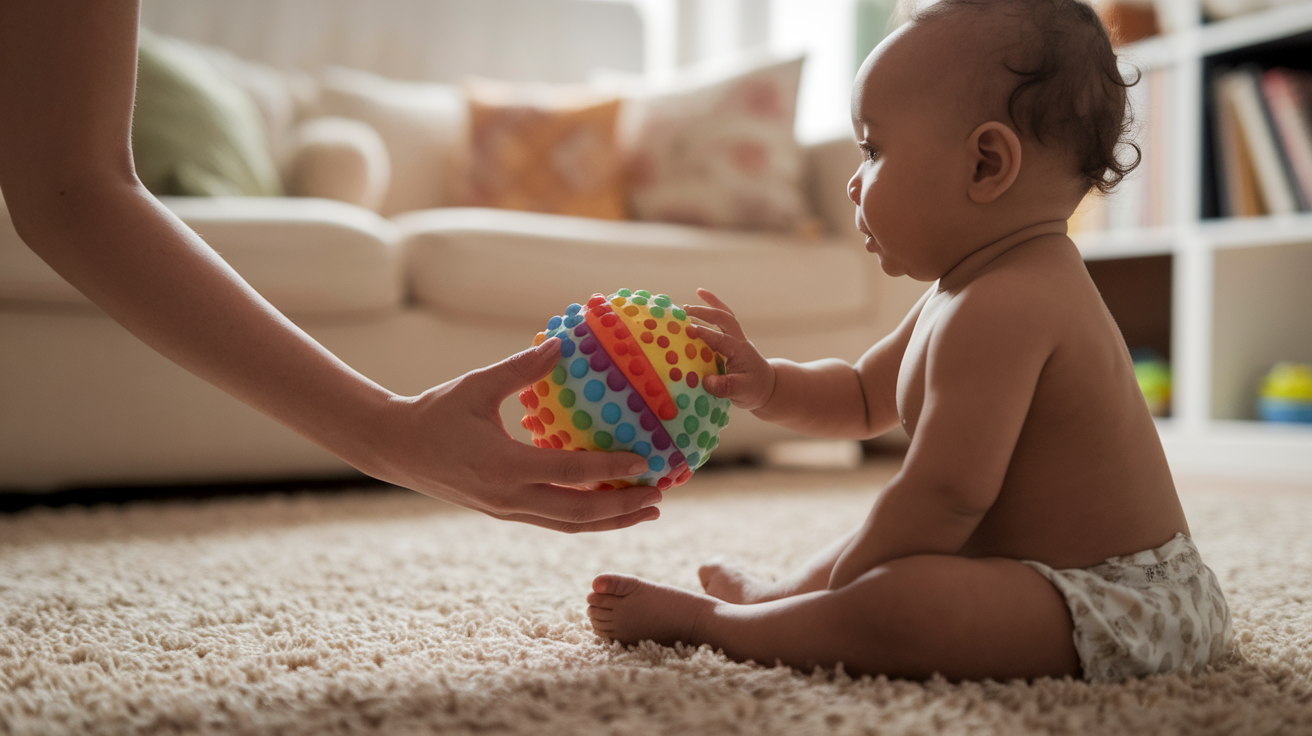
Gently roll a soft ball toward your baby to prompt reaching movements. Use textured balls to add sensory input to the activity. Choose balls of different sizes to challenge various grasping skills and hand positions.
Allow your baby to inspect the ball’s texture and weight when they successfully catch or stop it.
6. Supported Standing
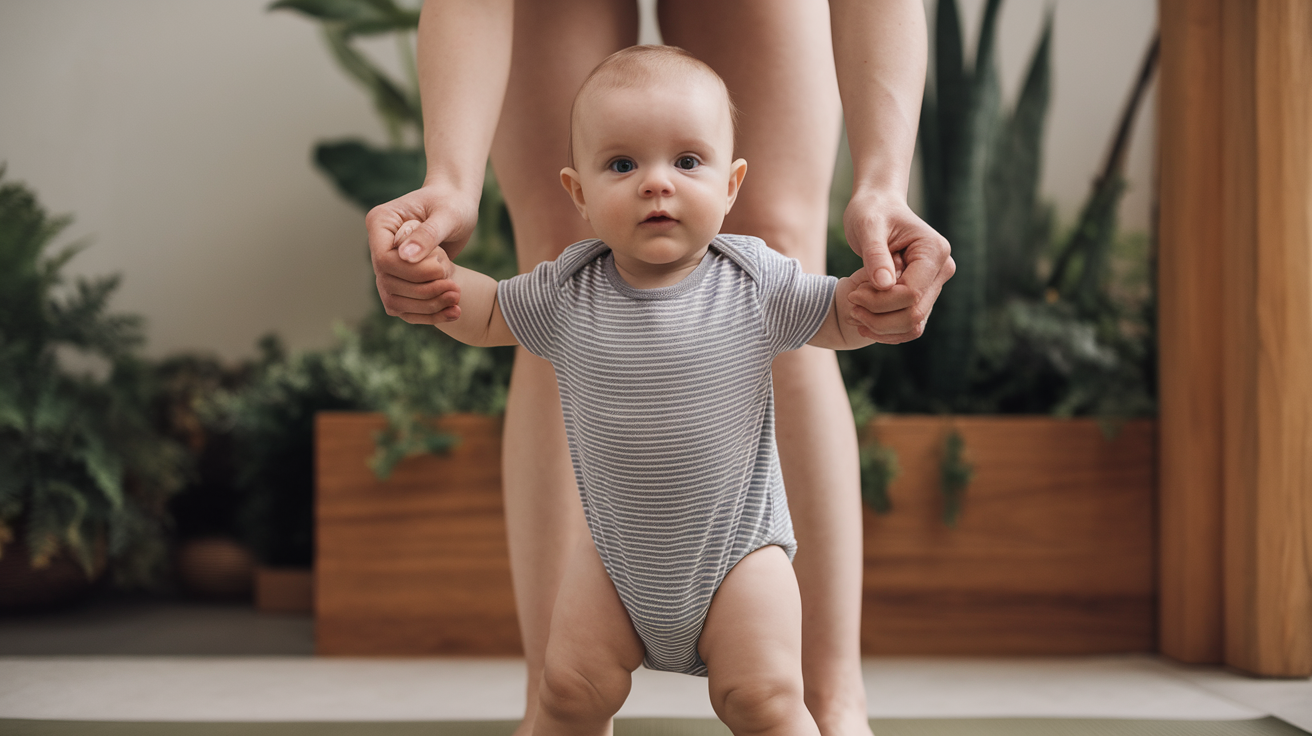
Hold your baby upright to help strengthen leg muscles safely. Support them under their arms while their feet touch the ground.
Allow them to bounce gently while standing to build leg strength and enjoy the sensation of movement. This activity also helps develop balance and spatial awareness as they experience being upright.
7. Batting at Toys
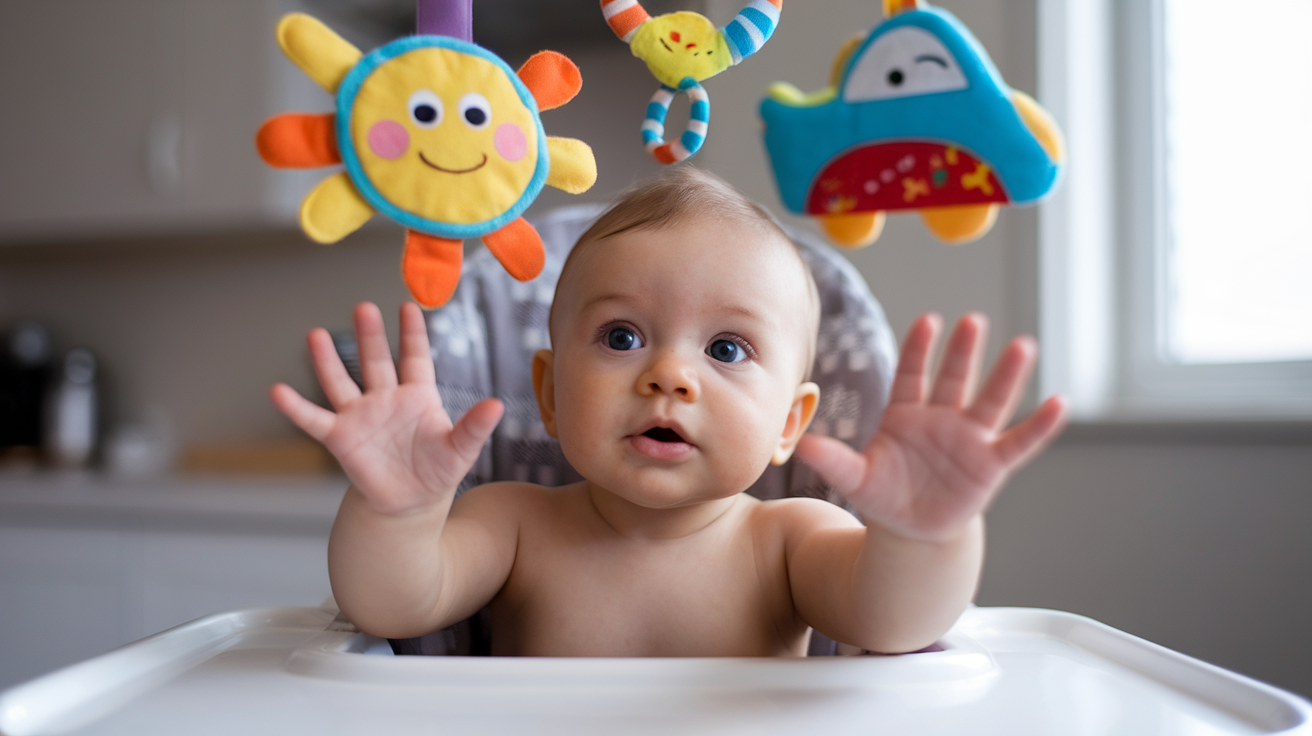
Hang safe toys above your baby to encourage coordinated arm movements. Change toy positions regularly to challenge different muscle groups.
Use toys that make sounds or move when touched to provide immediate feedback for their efforts. Rotate between different types of hanging toys to maintain interest and develop various motor skills.
8. Exploring Textures
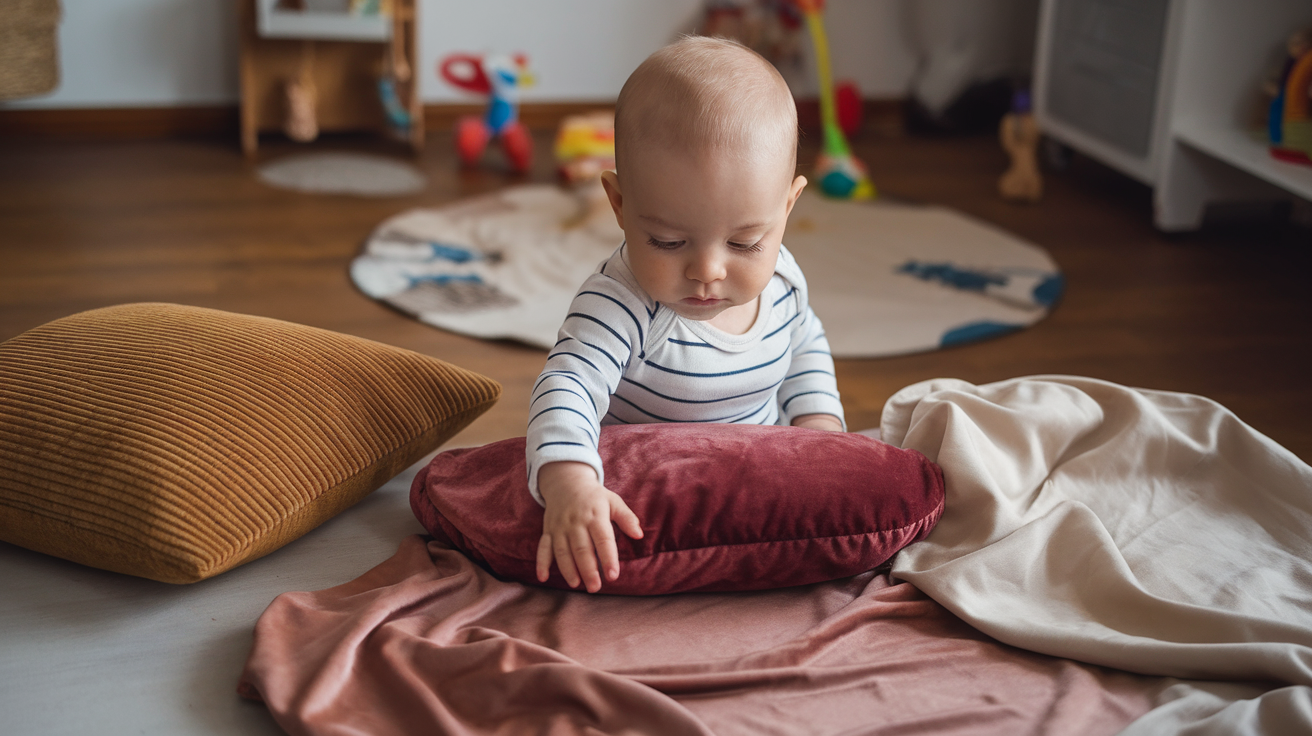
Introduce different safe fabric textures for tactile study. Use materials like velvet, corduroy, and smooth cotton for variety.
Allow your baby to touch, rub, and inspect each texture while you describe what they’re feeling. Create a texture book or basket with various safe materials for ongoing study.
9. Water Play
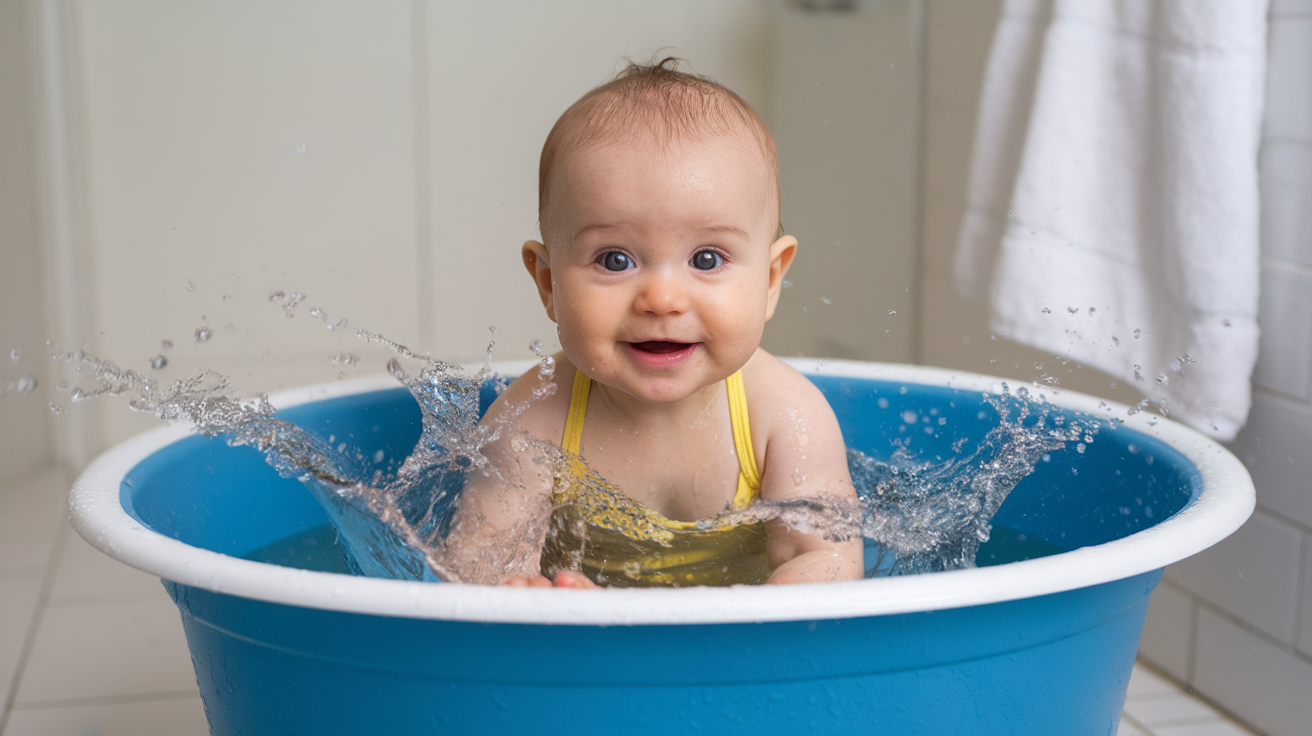
Provide supervised water play in a small tub for splashing and touching. Always maintain constant supervision during any water activities.
Use warm water and let your baby splash with their hands and feel the water’s movement. Water play provides excellent sensory stimulation and can be very calming for many babies.
10. Sound Study
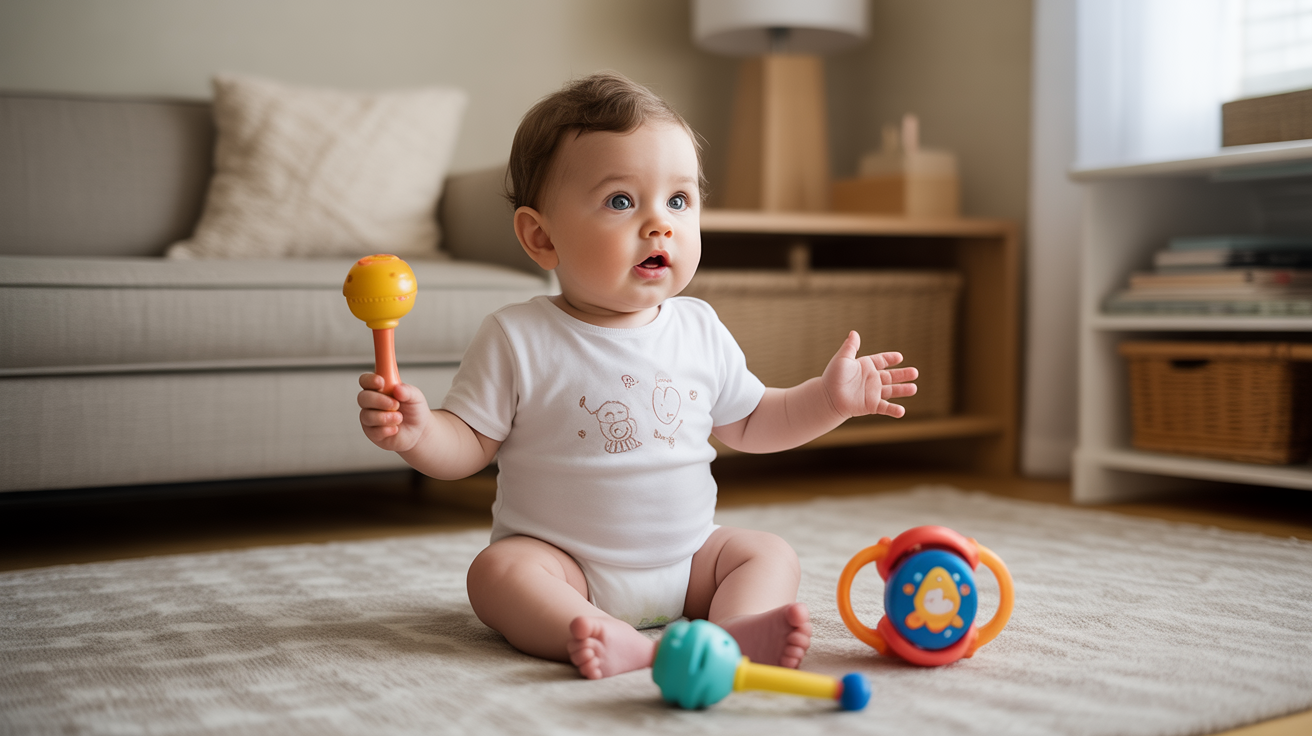
Use rattles and musical toys to stimulate hearing development. Vary the sounds from soft to louder to gauge reactions.
Observe your baby’s responses to different types of sounds and rhythms to understand their preferences. Try making sounds from other directions to encourage head turning and sound localization.
11. Playing with Mirrors
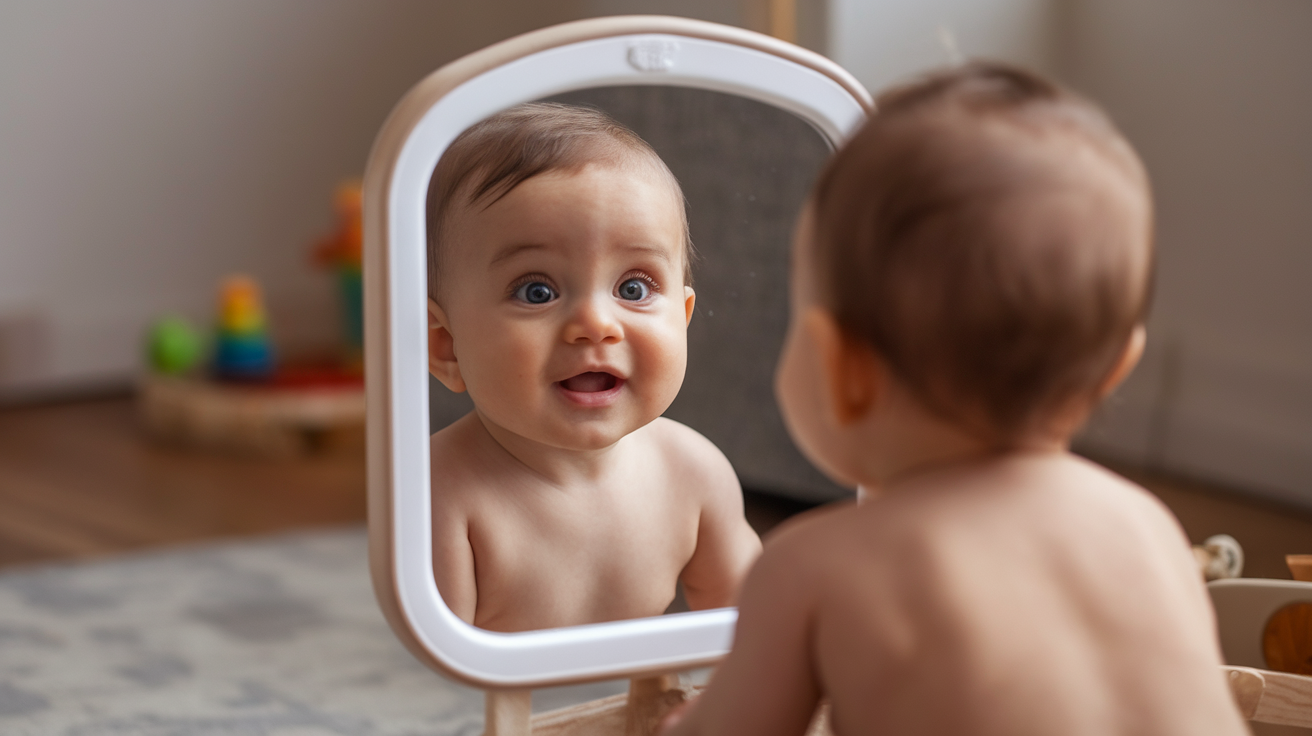
Let your baby see their reflection to promote self-recognition. Use unbreakable mirrors designed specifically for infant safety.
Place the mirror at different angles and distances to provide various perspectives of their reflection. This activity supports early self-awareness and visual development.
12. Smell and Scent Study
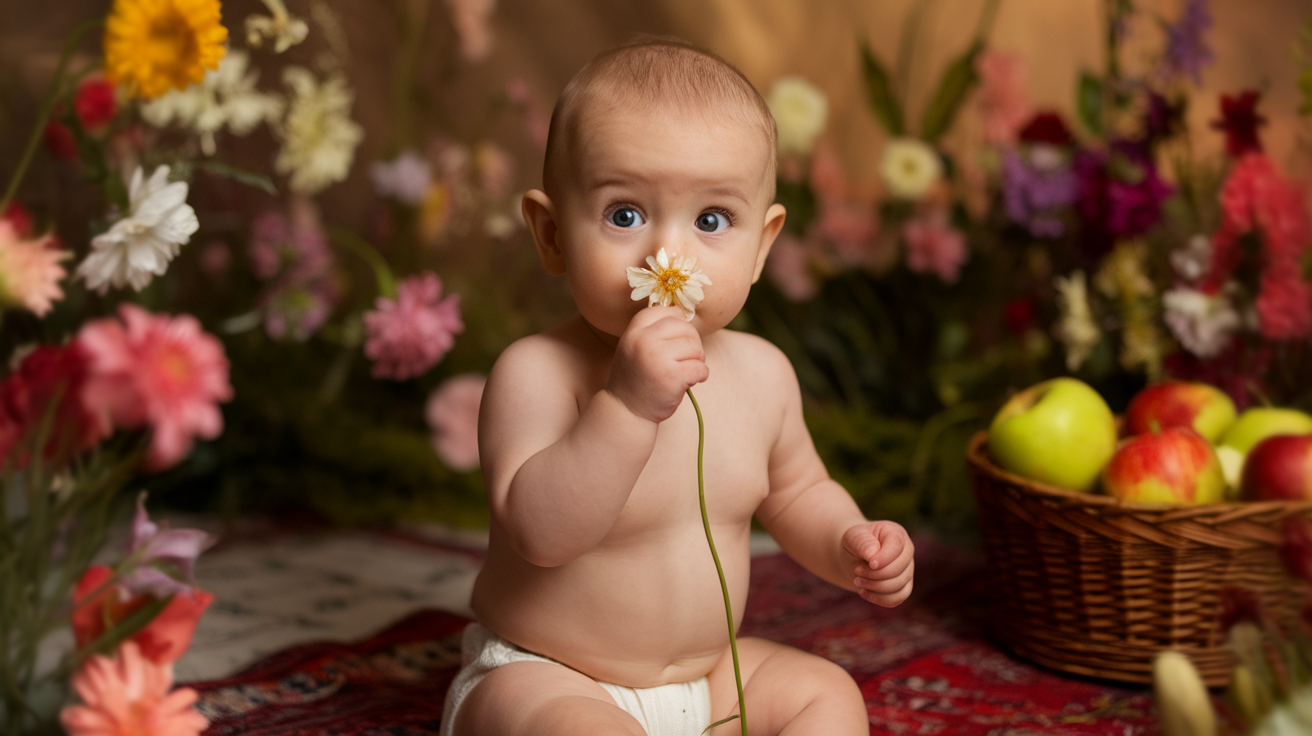
Safely introduce pleasant scents like flowers or vanilla. Hold scented items near your baby while describing the smells.
Use natural scents and avoid anything too strong or artificial that might be overwhelming. Always ensure scented items are safe and kept out of reach when not supervised.
13. Touching Safe Household Items

Allow study of wooden spoons, fabric, and similar safe objects. Ensure all items are clean and too large to pose choking hazards.
Rotate different household items to provide new experiences and textures for study. Describe each item as your baby touches it, building vocabulary and understanding of everyday objects.
14. Light Play
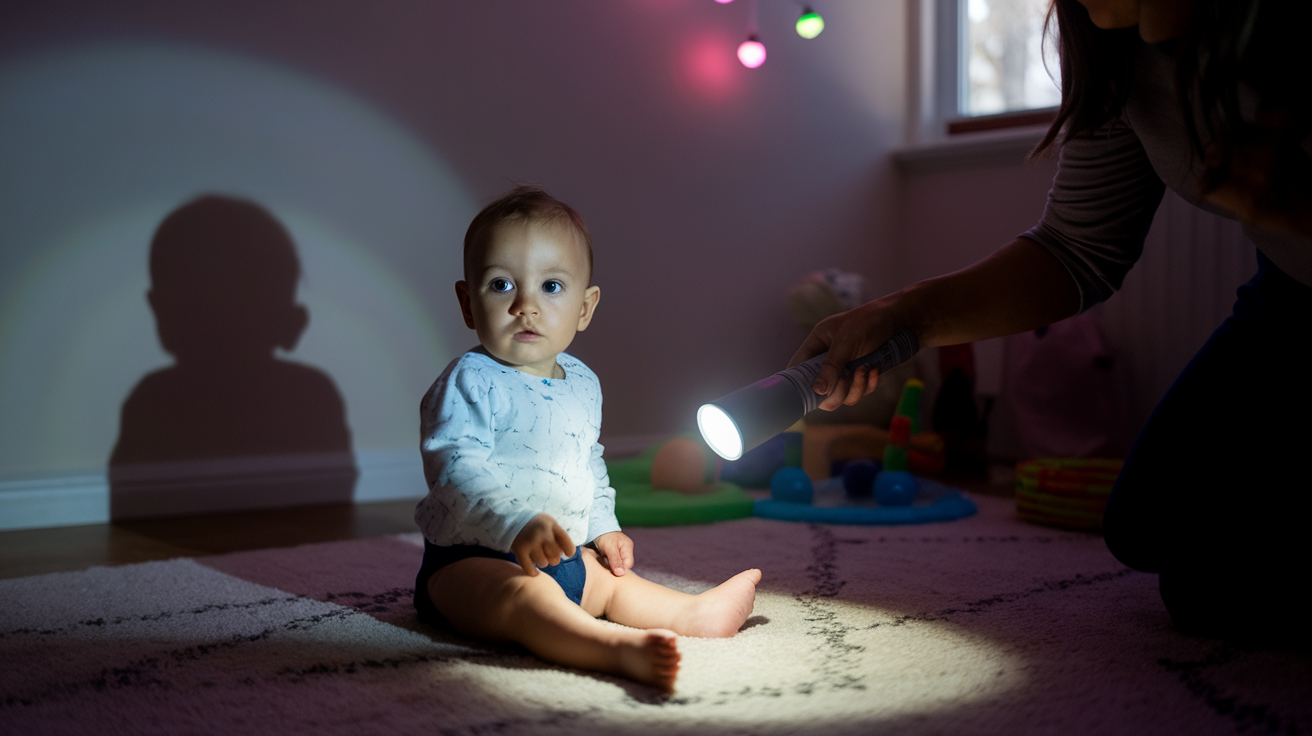
Use flashlights or colored lights for visual tracking exercises. Move lights slowly to encourage eye movement and focus.
Create patterns on the wall or ceiling with the light for your baby to follow with their eyes. This activity develops visual tracking skills and teaches babies to focus on moving objects.
15. Talking and Singing
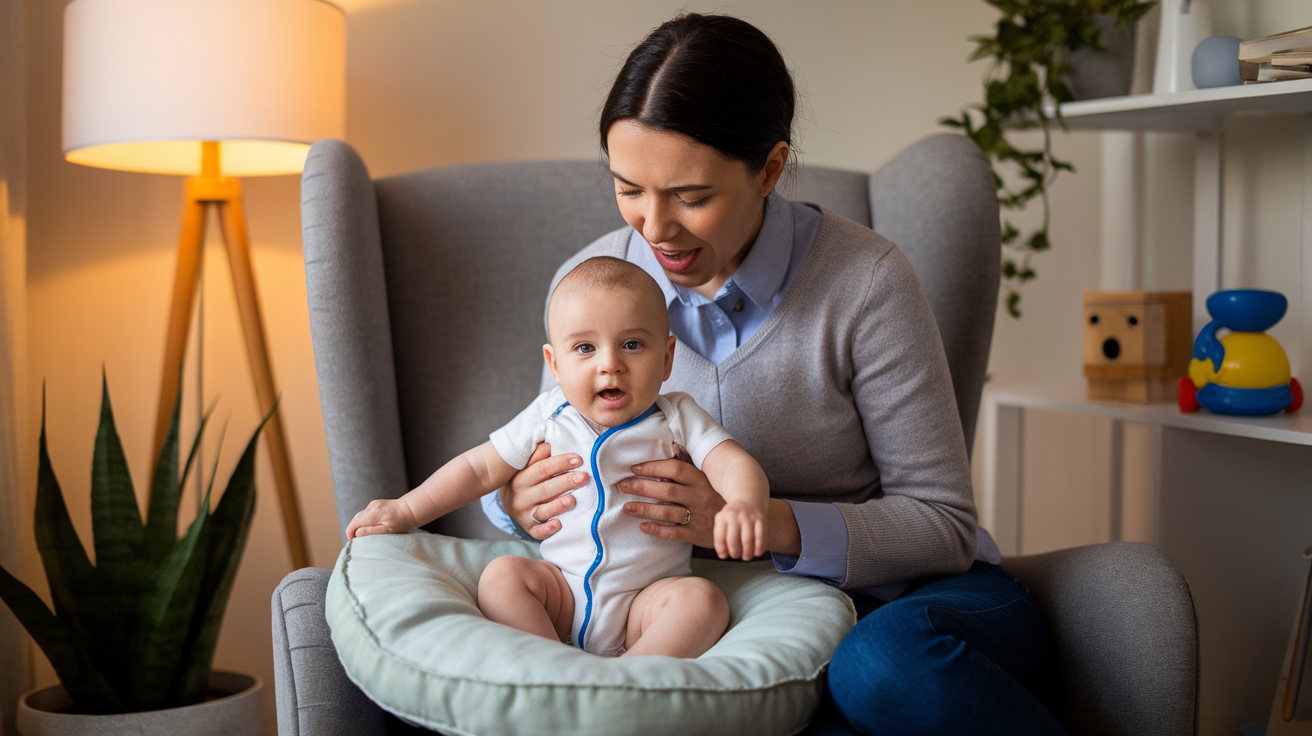
Speak directly to your baby and sing simple songs regularly. Maintain eye contact and use animated facial expressions.
Use different tones of voice and repeat favorite songs to help your baby begin recognizing patterns in language. Respond to your baby’s sounds as if having a conversation, encouraging early communication skills.
16. Reading Board Books
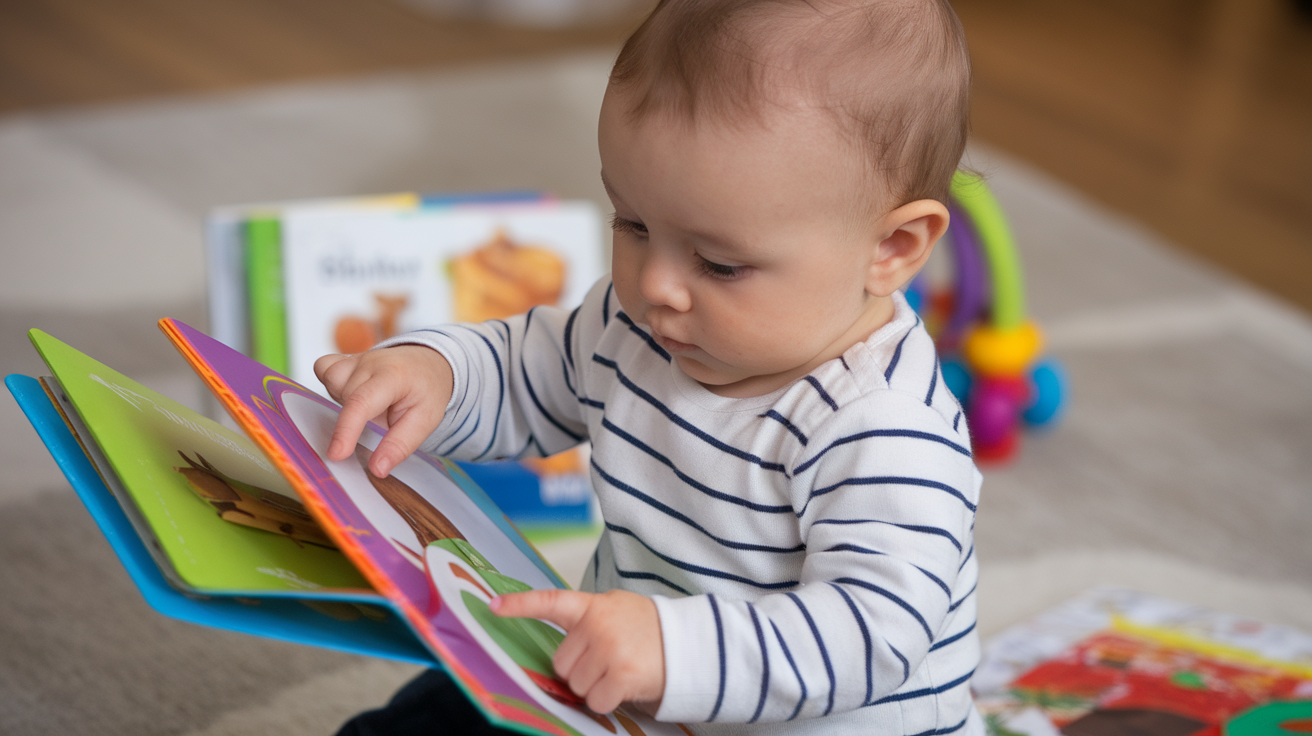
Share colorful board books with simple images and words. Point to images while naming objects to build vocabulary.
Choose books with high-contrast images and simple, repetitive text that babies can begin to anticipate. Reading together builds early literacy skills and creates positive associations with books and learning.
17. Imitating Sounds
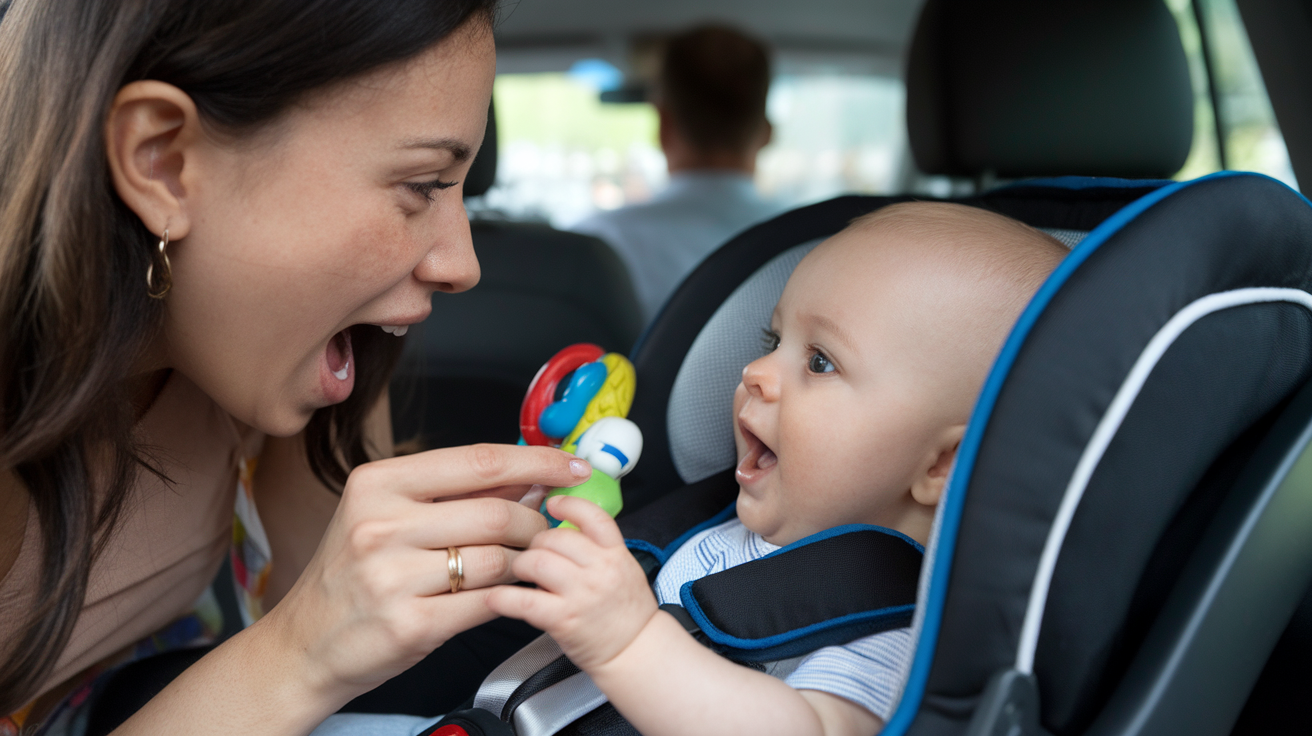
Echo your baby’s babbling to encourage continued vocalization. This back-and-forth communication builds early conversation skills.
This interaction teaches babies about turn-taking in conversation and encourages them to experiment with new sounds.
18. Baby Sign Language
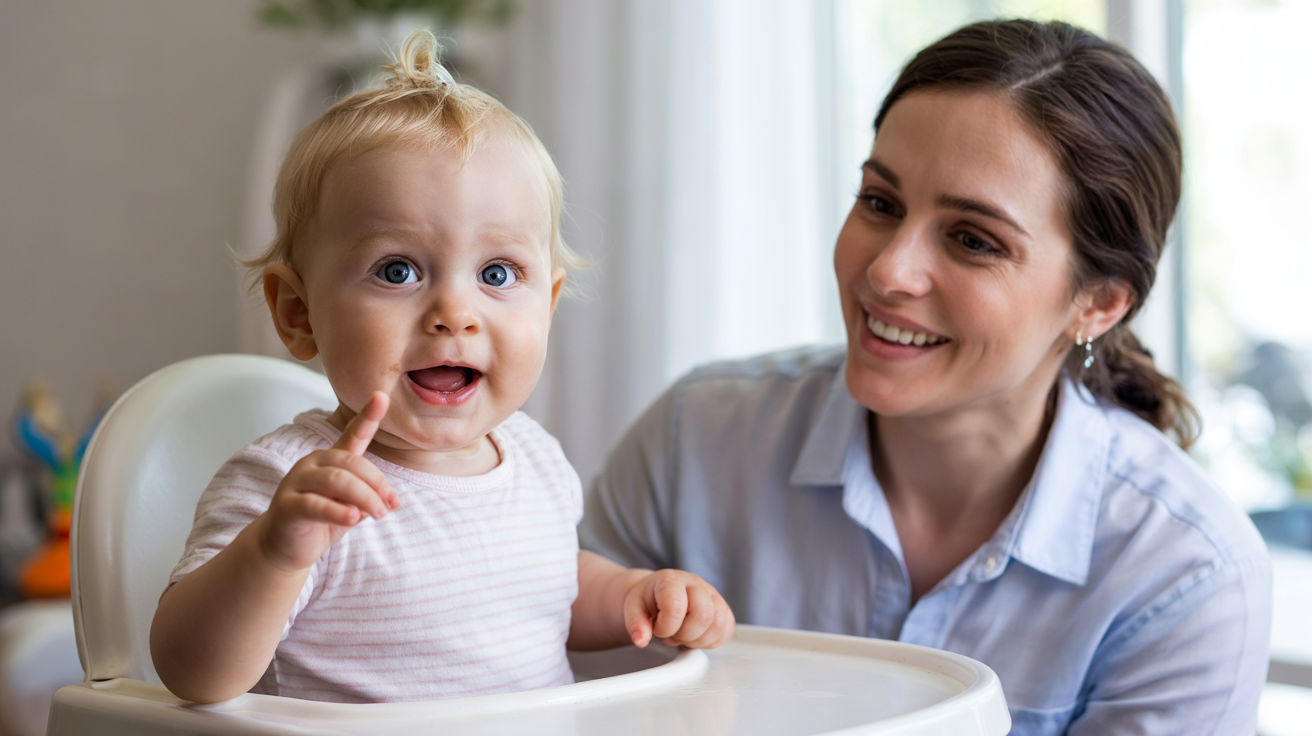
Begin teaching simple signs for “milk,” “more,” and “all done.” Use consistent hand movements paired with spoken words.
Repeat the signs during relevant activities like feeding or playing to help your baby make connections. Be patient as it may take weeks or months for babies to use signs independently.
19. Playing with Musical Toys
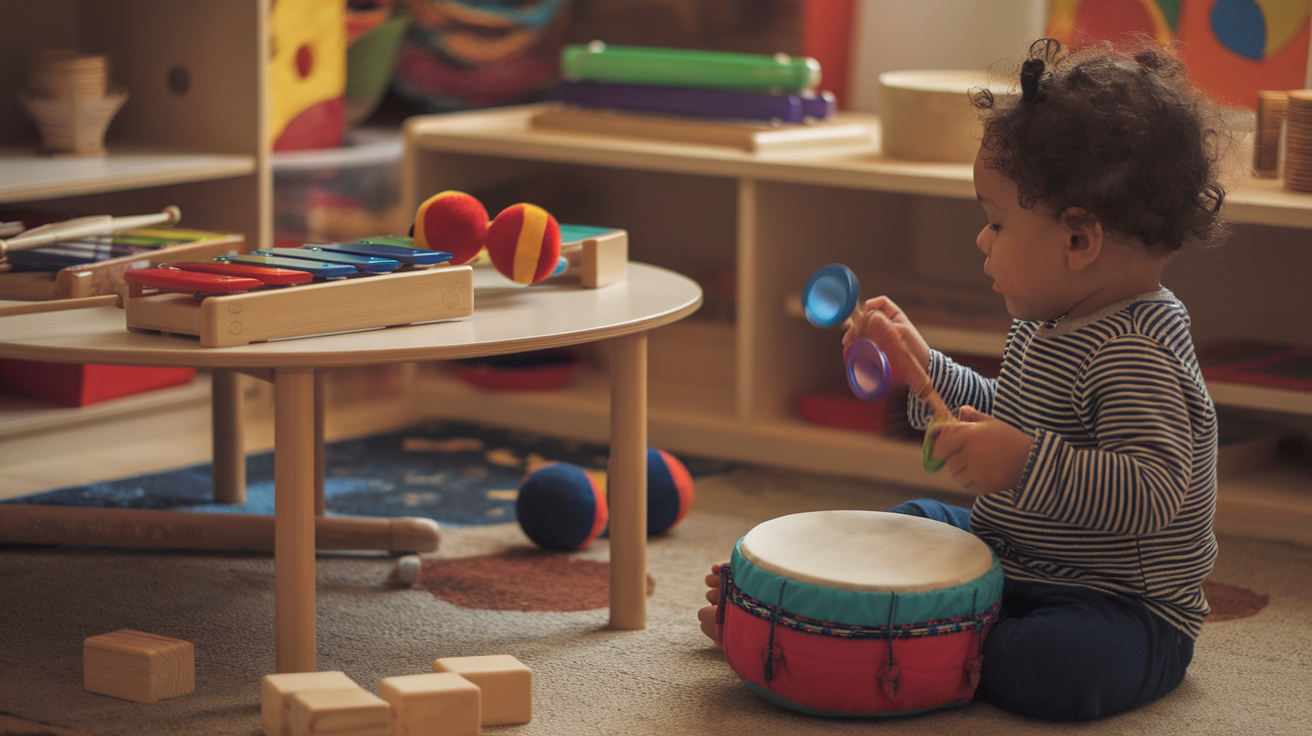
Introduce instruments that produce different sounds and melodies. Simple shakers and soft drums work well for this age.
Demonstrate how to use each instrument and then let your baby explore making sounds independently. This activity develops rhythm awareness and fine motor skills while providing auditory stimulation.
20. Listening to Music
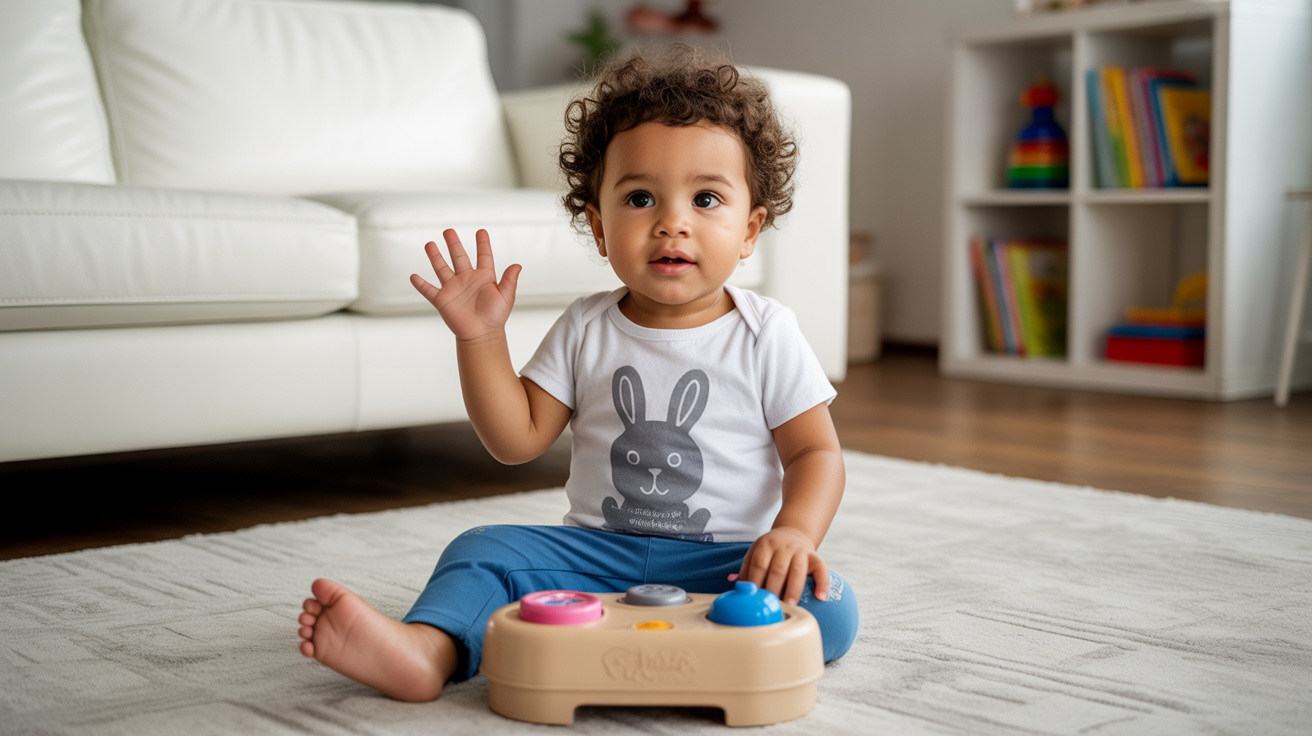
Play various music styles and observe your baby’s reactions. Notice which types of music calm or energize your baby.
Use music during different activities like playtime, feeding, or bedtime to create routines and associations. Dance gently with your baby to help them feel the rhythm through movement.
21. Storytelling with Faces
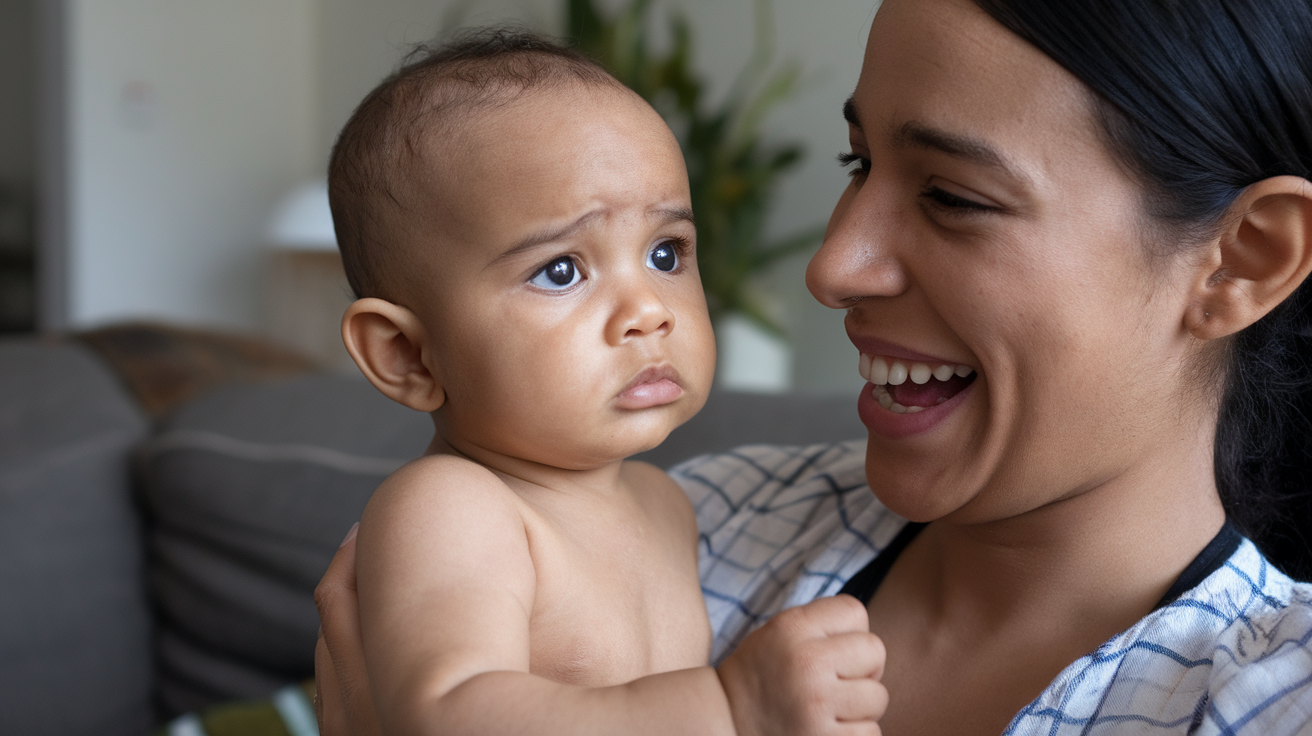
Use varied facial expressions while speaking to convey emotions. Exaggerate expressions to help your baby understand emotional connections.
Tell simple stories about daily activities while using expressive faces to match the content. This helps babies learn to read facial expressions and understand emotional communication.
22. Peekaboo
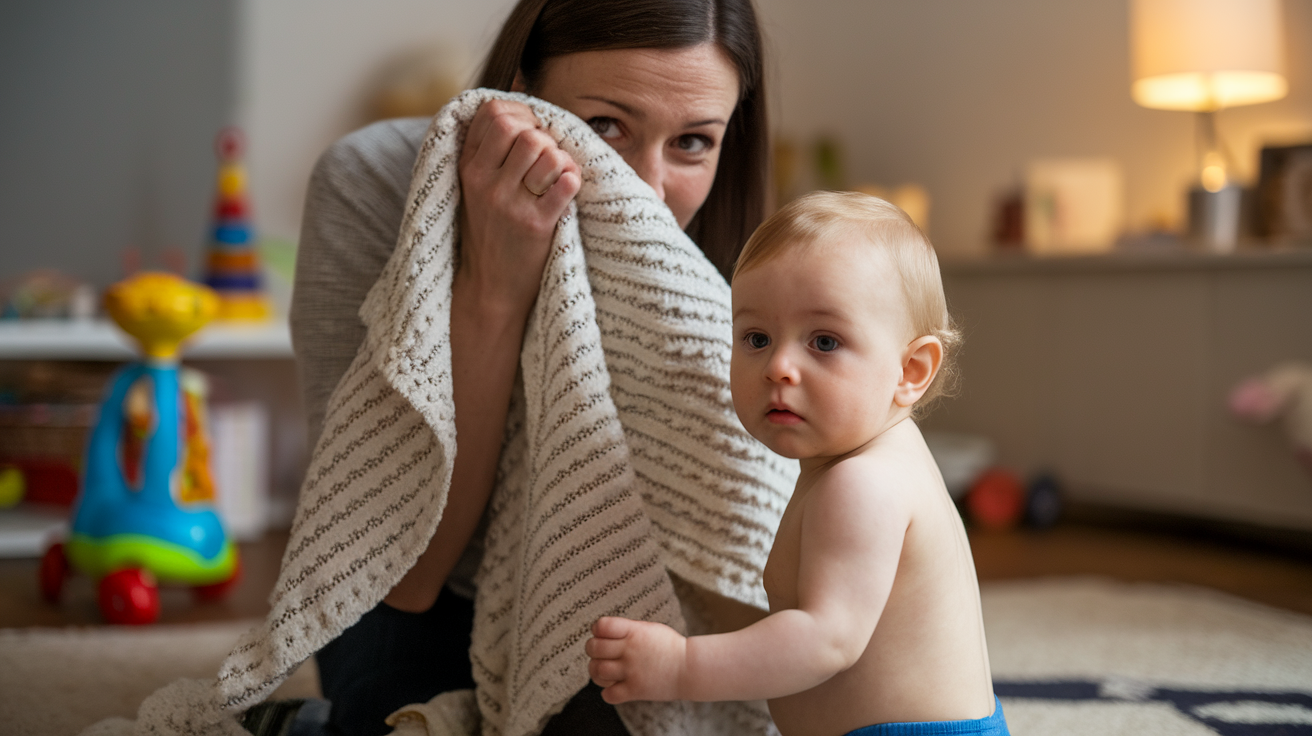
Play this classic game to develop object permanence and social interaction. Use blankets, hands, or toys to create surprise elements.
Vary the timing and hiding spots to keep the game interesting and challenging. This game teaches babies that things continue to exist even when they can’t see them.
23. Mirror Play
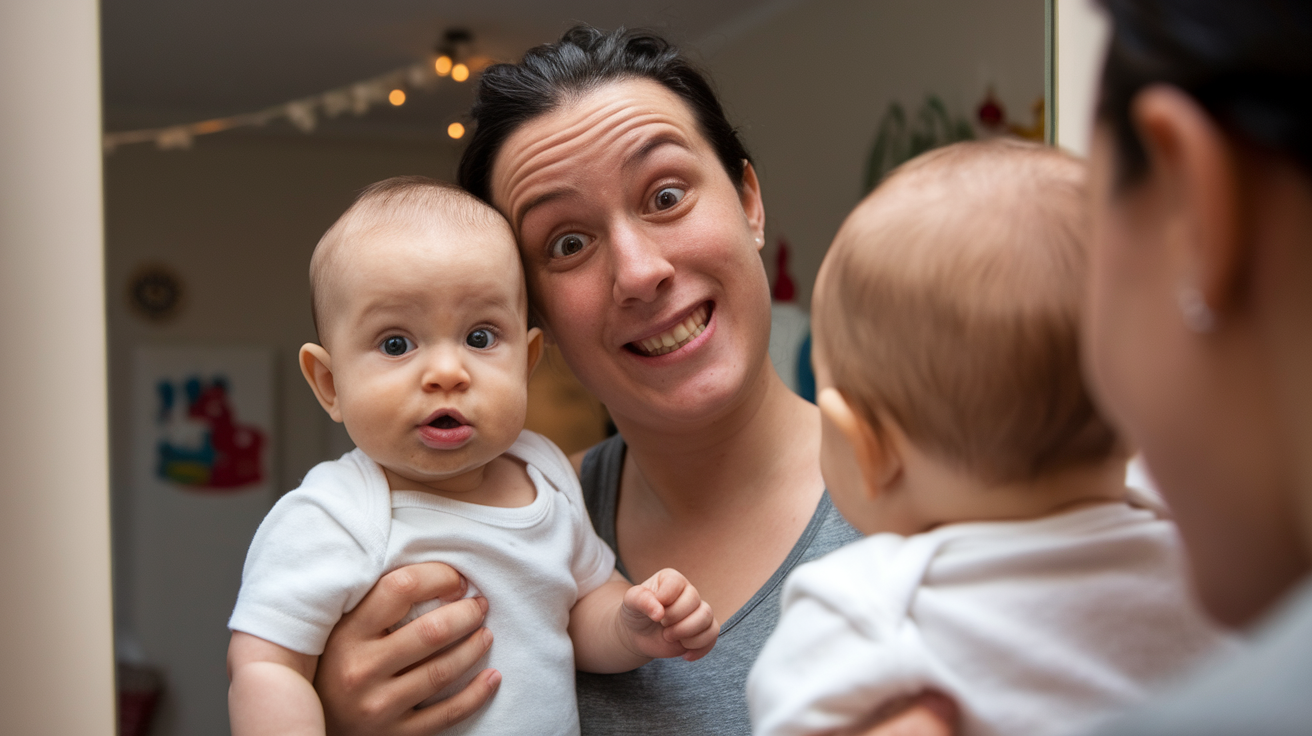
Make faces together in mirrors to encourage facial recognition skills. Smile, frown, and make silly faces while watching reactions.
Point to different facial features in the mirror while naming them to build body awareness. Touch your baby’s nose, then show them their nose in the mirror to help them understand the reflection represents them.
24. Playdates with Other Babies
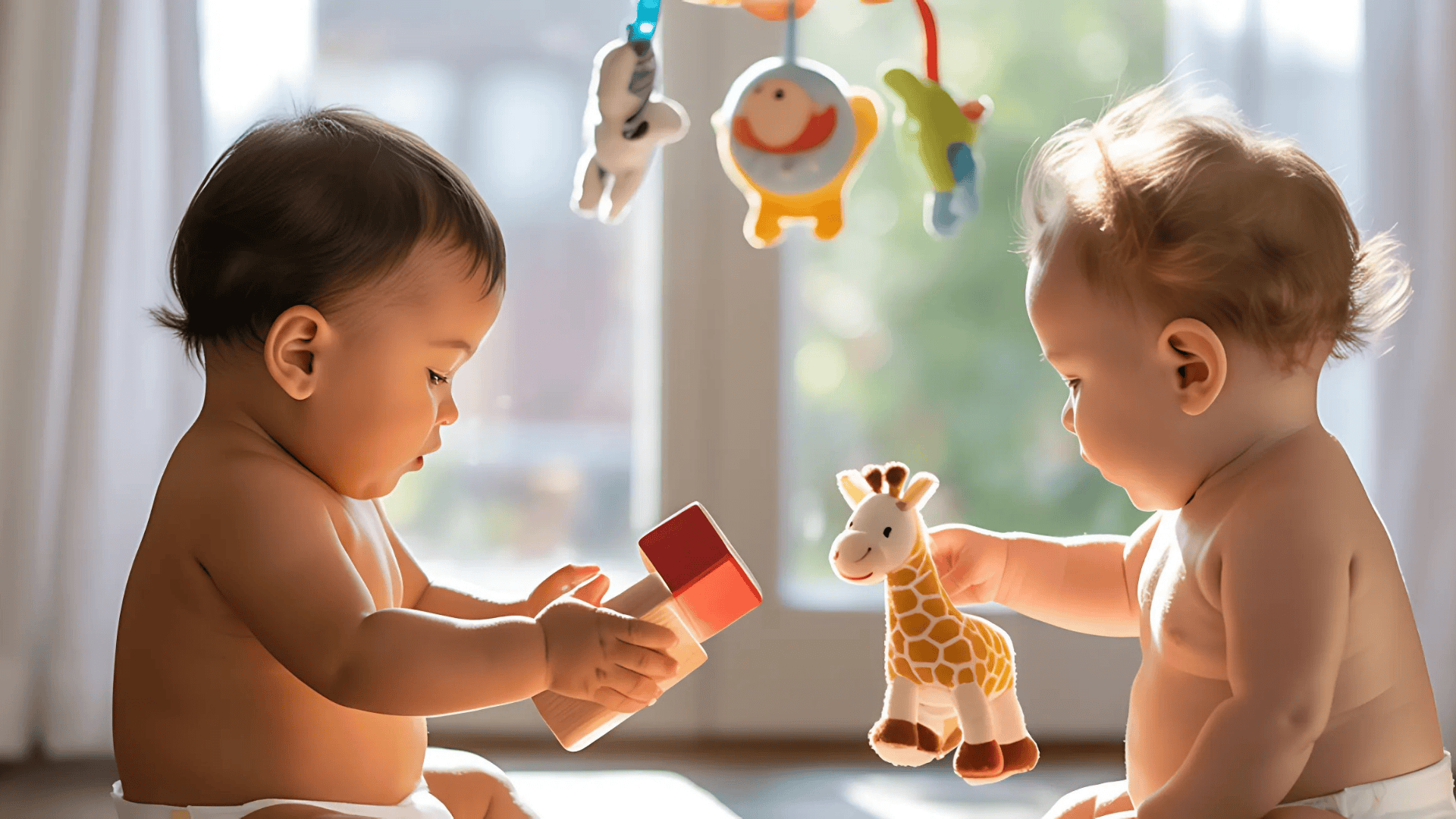
Arrange supervised interactions with other infants. These social experiences help develop early relationships and sharing concepts.
Keep initial playdates short and watch for signs of overstimulation in the babies. Parallel play is normal at this age, so don’t expect much direct interaction between babies.
25. Baby Massage
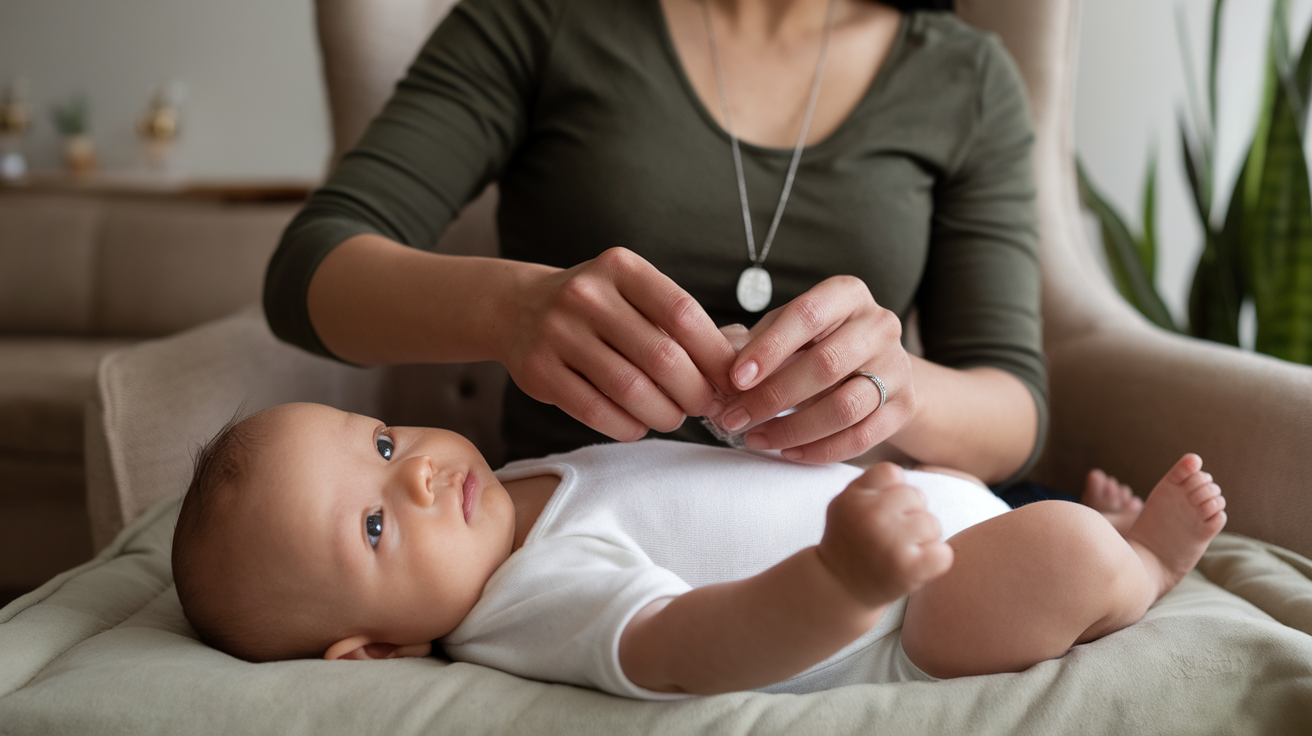
Provide a gentle massage for relaxation and bonding. Use soft strokes on arms, legs, and back during calm periods.
Use natural oils if desired and always test for any skin reactions first. Talk softly or sing during massage to create a peaceful, loving experience that your baby will associate with comfort and security.
26. Talking to Baby

Have one-sided conversations to model communication patterns. Describe daily activities and respond to your baby’s sounds.
Narrate what you’re doing throughout the day, such as “Now I’m changing your diaper” or “Let’s put on your socks.” This constant language exposure helps babies understand communication patterns and builds their vocabulary.
27. Mimicking Baby’s Movements

Copy sounds and gestures to show understanding. This mirroring behavior strengthens emotional connection and communication.
When your baby makes a sound or movement, repeat it back to them with enthusiasm. This shows them that their actions have meaning and encourages them to continue communicating.
28. Cuddling and Holding
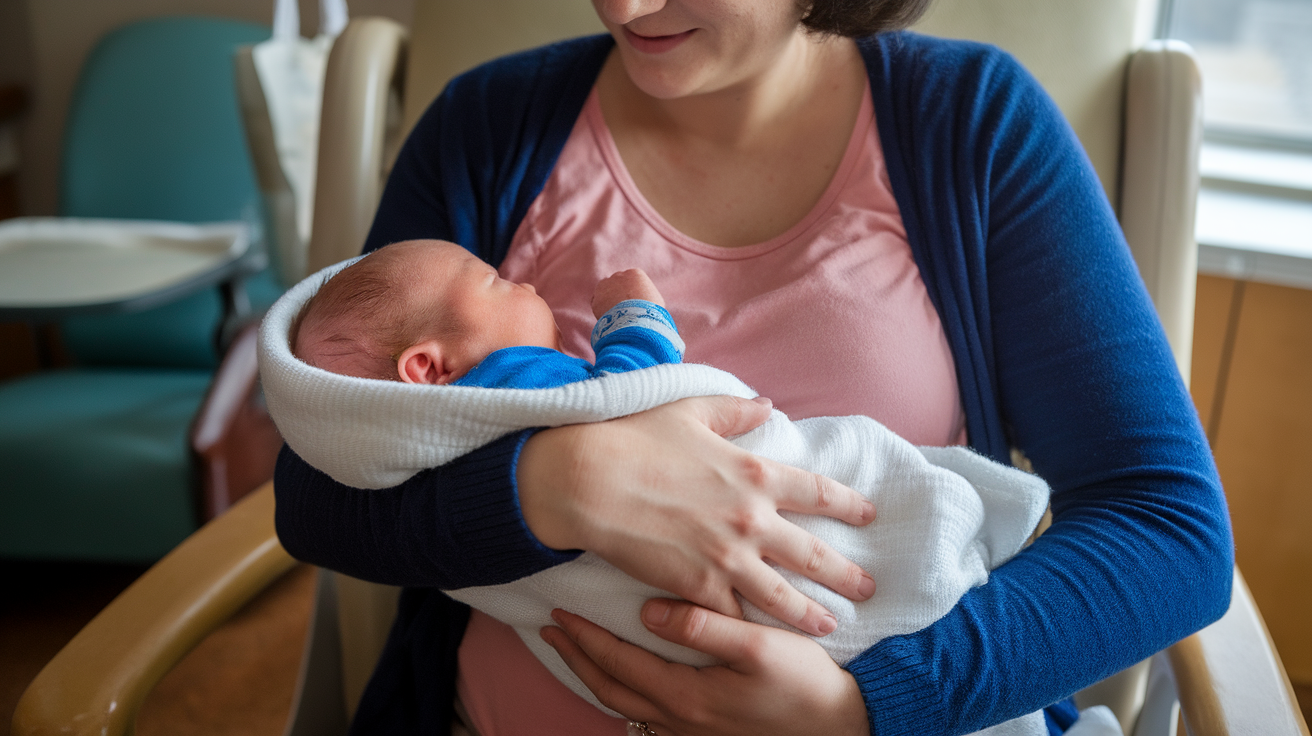
Maintain close physical contact for emotional security. Skin-to-skin contact promotes bonding and emotional development.
Hold your baby during feeding, reading, or just relaxing together to provide comfort and security. Physical closeness helps regulate your baby’s emotions and stress levels while building trust.
29. Cause and Effect Toys
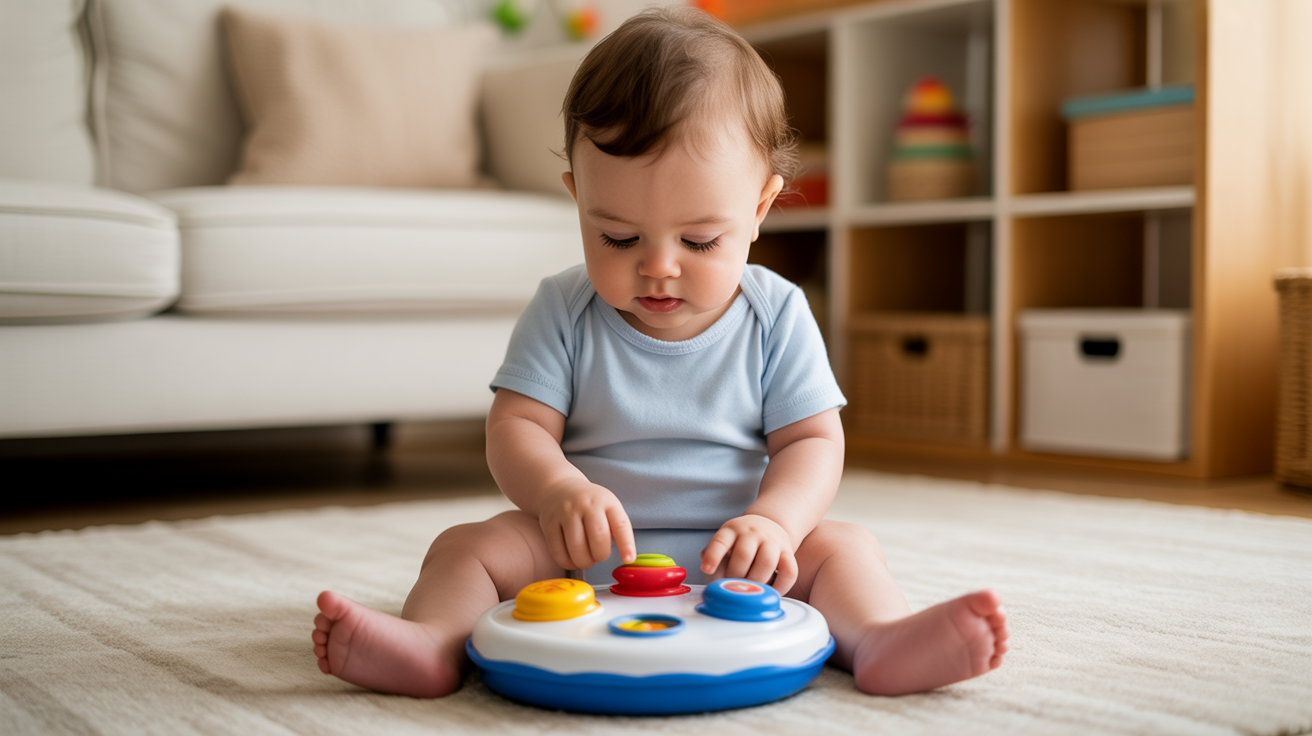
Introduce toys with buttons that create sounds or lights. These toys help babies understand that actions produce results.
Show your baby how to activate the toy, then let them experiment independently. Celebrate when they successfully make something happen to reinforce the learning.
30. Color Recognition
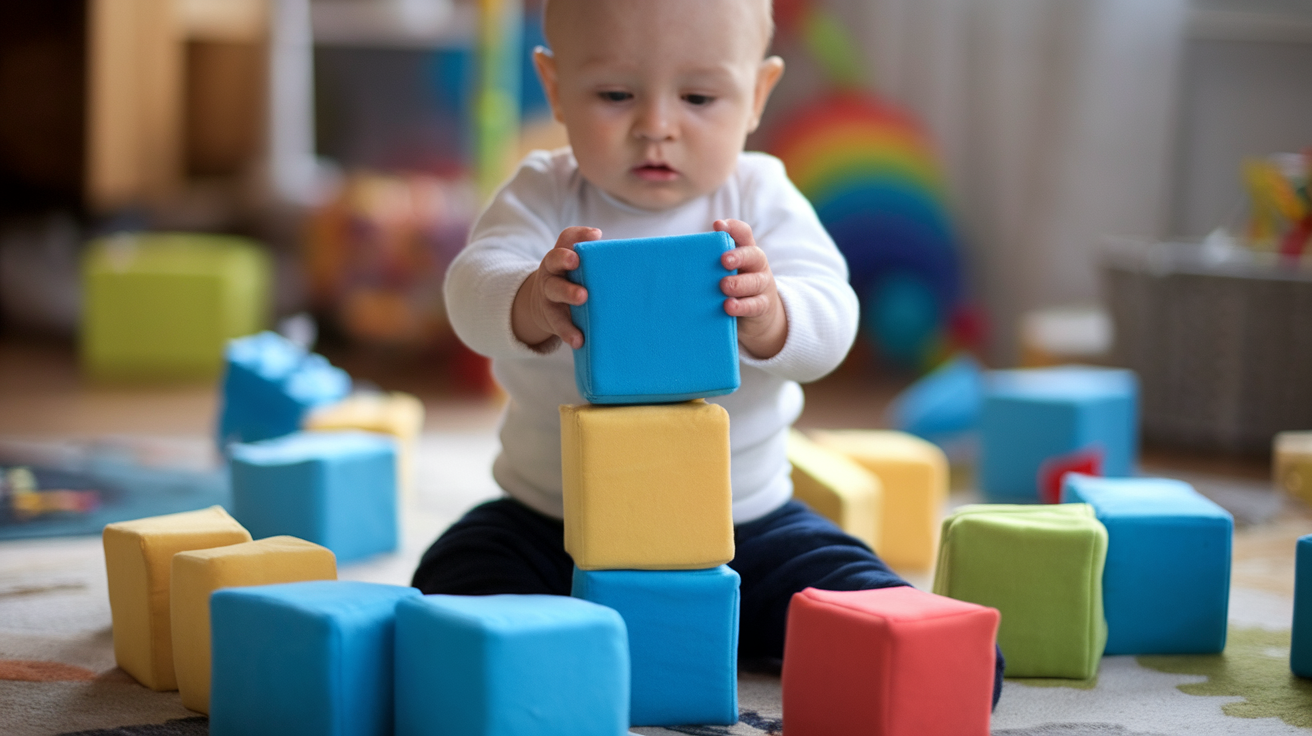
Use bright toys and objects to introduce color concepts. Name colors repeatedly while showing different colored items.
Hold up objects of the same color together to help your baby begin noticing similarities. While babies won’t understand color names yet, repeated exposure builds neural pathways for later color recognition.
31. Block Stacking
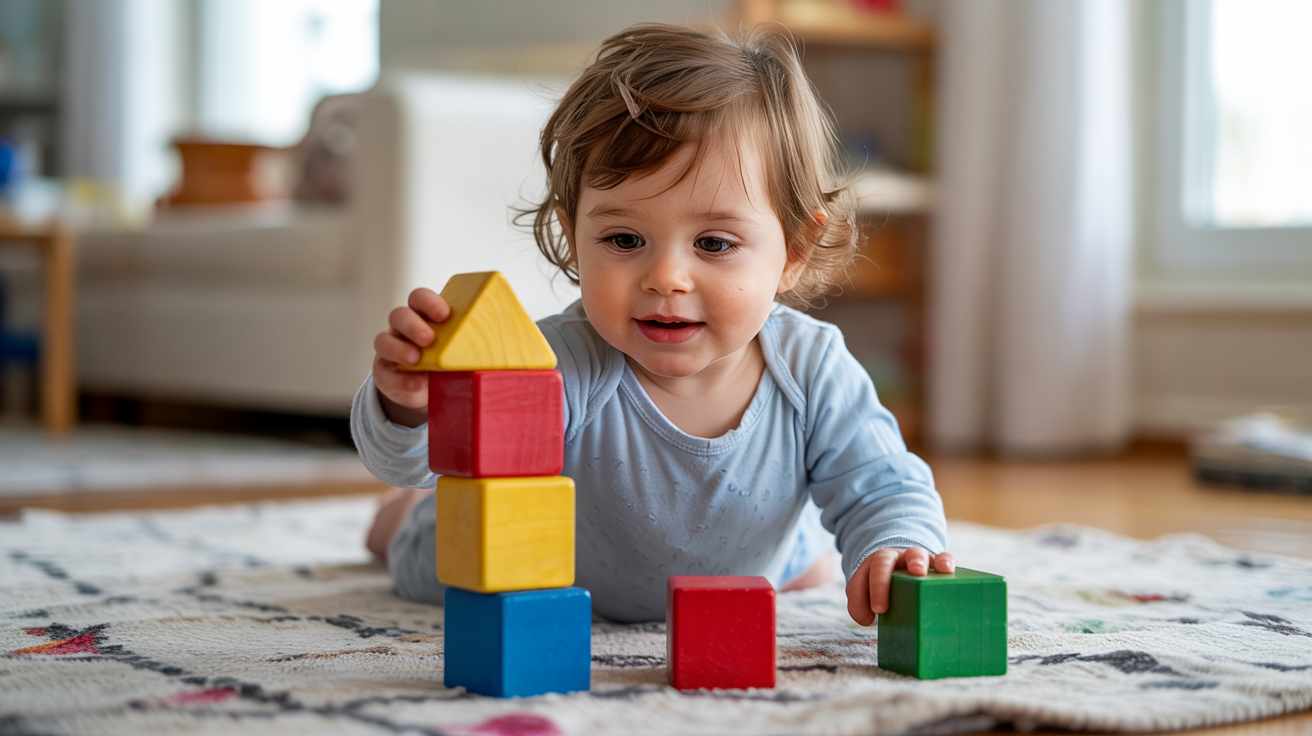
Provide soft blocks for early construction and spatial awareness. Start with two blocks and gradually add more as skills develop.
Demonstrate stacking blocks while your baby watches, then let them knock them down for cause-and-effect fun. Soft blocks are safe for babies to mouth and explore while developing grasping skills.
32. Play with Soft Dolls

Introduce stuffed animals to encourage nurturing behaviors. Show your baby how to hug and pat dolls gently.
Use the dolls for pretend play by feeding them or putting them to sleep, modeling caring behaviors. This type of play helps babies develop empathy and understanding of gentle touch.
33. Sensory Bottles
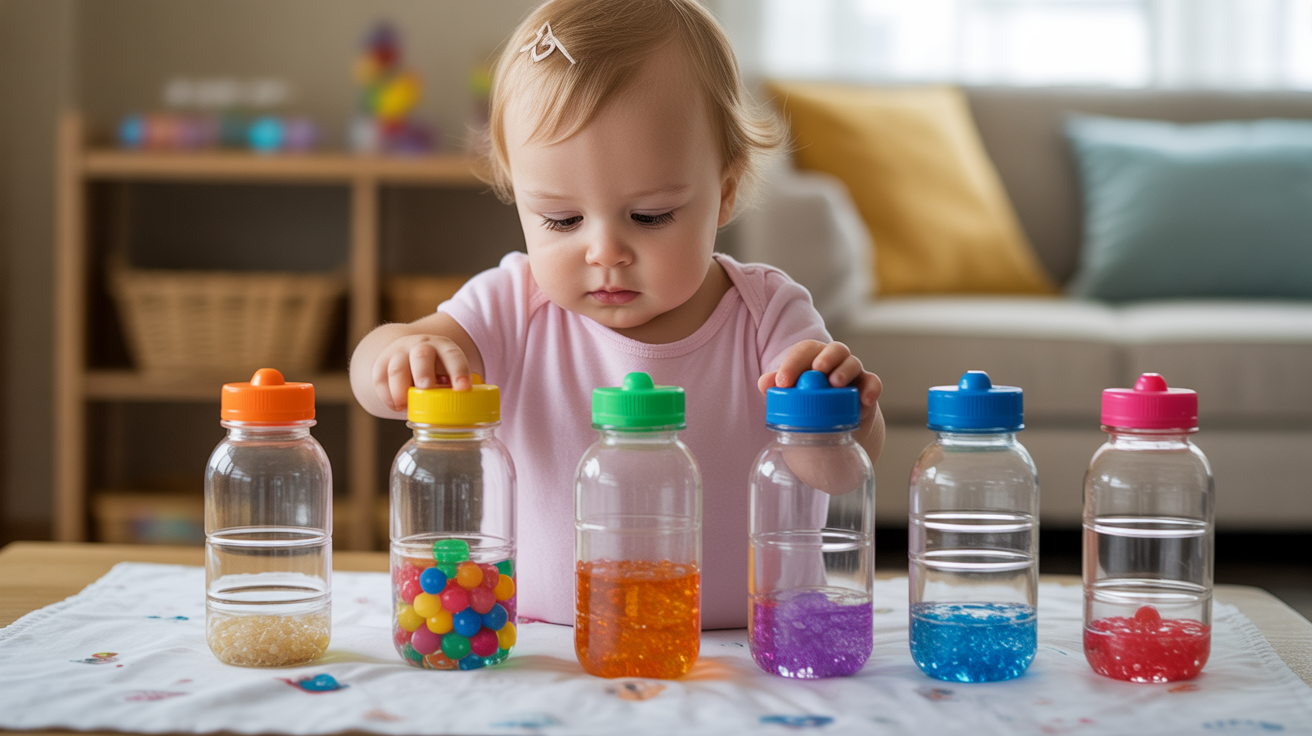
Create bottles filled with colorful beads or liquids for visual stimulation. Secure lids tightly to prevent opening during play.
Create several bottles with different contents, such as rice, water with food coloring, or small safe objects that produce various sounds when shaken.
Growth & Connection for Your Baby
Tracking your baby’s progress while building meaningful connections through play creates the foundation for healthy development and strong parent-child relationships.
- Progress Monitoring and Documentation: Monitor your baby’s development by noting improvements in motor skills, communication attempts, and social responses.
- Celebrating Individual Development: Celebrate small victories and remember that every baby develops at their own pace.
- Meaningful Play Interactions: Meaningful interactions during play activities strengthen emotional bonds and support healthy attachment formation.
- Building Long-Term Relationships: These shared experiences build trust, communication patterns, and emotional security that will benefit your relationship throughout your child’s development.
Age-Appropriate Activity Schedule by Time of Day
Timing your baby’s activities according to their natural energy patterns and attention spans maximizes developmental benefits and enjoyment.
| Time Period | Best Activities | Duration | Why This Time Works |
|---|---|---|---|
| Early Morning (7-9 AM) | Tummy time, reaching exercises, and assisted sitting | 5-10 minutes | Baby is most alert and energetic after sleep |
| Mid-Morning (9-11 AM) | Sensory play, texture study, mirror time | 10-15 minutes | Natural alert period with good attention span |
| Early Afternoon (1-3 PM) | Reading, singing, musical toys, and cause-and-effect play | 8-12 minutes | Post-nap alertness is ideal for learning activities |
| Late Afternoon (4-6 PM) | Social play, peekaboo, mimicking, and playdates | 10-15 minutes | Social energy peaks are good for interactive games |
| Early Evening (6-8 PM) | Water play, light study, and color recognition | 5-10 minutes | Moderate energy suitable for engaging activities |
| Bedtime Routine (8-9 PM) | Baby massage, cuddling, soft singing, and gentle reading | 15-20 minutes | Calming activities prepare for the sleep transition |
Supporting Your Baby’s Growth
Regular engagement through play, interaction, and study helps build the skills your baby needs for future learning and growth.
Remember that consistency and patience matter more than perfection.
Each baby develops at their rate, and the most important elements are your loving attention and encouragement throughout this exciting stage.
The simple act of being present and responsive to your baby’s cues creates lasting bonds that benefit both emotional and cognitive development.
What activities does your 6-month-old enjoy most? Comment below to share your favorite developmental games or ask questions about adapting activities for your baby’s specific interests and abilities!





